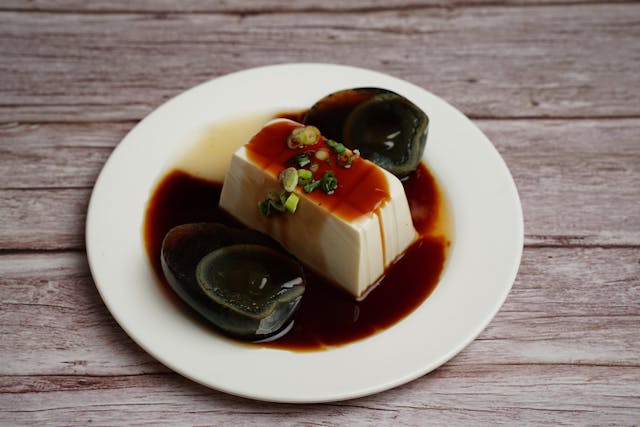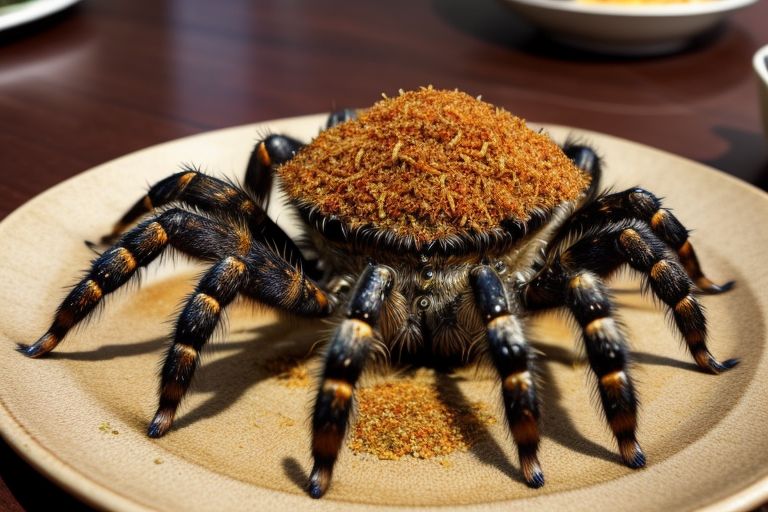Food is one of the most exciting ways to experience different cultures. Around the world, every country has its unique local delicacies that showcase its history, climate, and food culture. While some dishes may sound perfectly normal to locals, others can seem downright bizarre to outsiders. From insects to fermented fish, many foods are considered strange, exotic, or downright surprising.
But that’s exactly why they make for such a thrilling culinary adventure. If you’re a foodie looking to step out of your comfort zone and try something truly unusual, here are ten of the strangest foods you should consider tasting around the world.

Century Egg (China)

Description and Preparation
One of China’s most unique delicacies, the century egg (also called hundred-year-old egg) is a preserved egg that has undergone a fascinating process of fermentation. Usually, it’s a duck egg, though chicken and quail eggs are also used. The eggs are coated in a mixture of clay, lime, and ash, and then buried for several weeks to months, depending on the desired result. The preservation process gives the egg a dark, almost black appearance with a translucent, jelly-like texture.
Cultural Significance and Taste Profile
Century eggs are often served as part of Chinese appetizers or snacks. In Chinese culture, they are considered a symbol of longevity and are frequently included in festive meals. As for the taste, the eggs are described as having a savory, slightly pungent flavor, which may be a surprise to those not accustomed to fermented foods. The texture can be off-putting for some, but many find them a delicacy worth trying.
Casu Marzu (Italy)

Overview of This Maggot-Infested Cheese
Casu Marzu is a traditional Sardinian cheese that is famous—or infamous—for being infested with live maggots. The cheese is made from sheep’s milk and goes through a fermentation process where cheese fly larvae (known as Piophila casei) are introduced. The larvae digest the cheese, turning it into a soft, spreadable mass.
Legality and Cultural Context
While casu marzu was once a common household food, its sale has been banned by the European Union due to health concerns. However, it can still be found in Sardinia, where it’s made and consumed in small quantities by those in the know. The texture of the cheese is creamy, with a tangy and sometimes spicy taste, while the larvae, if you choose to eat them, are surprisingly soft and not as disgusting as they sound.
Fried Tarantulas (Cambodia)

Historical Background and Current Popularity
In Cambodia, fried tarantulas have become a popular street food. The practice dates back to the 1970s when people were forced to eat whatever they could find during the Khmer Rouge regime. Today, they’re served crispy and seasoned with garlic and salt, offering a crunchy snack.
Taste Comparison to More Familiar Foods
While the thought of eating a spider may make many squirm, fried tarantulas are actually not as terrifying as they seem. The meat is tender and has a flavor similar to crab or shrimp. The legs are crunchy, and while the body might not be for everyone, the legs are often considered the tastiest part.
Hákarl (Iceland)
Process of Fermentation and Preparation
Hákarl is fermented shark meat, traditionally made from Greenland shark. The meat undergoes a unique preparation process: it’s buried in the ground for several months to ferment, then hung to dry. The fermentation removes toxins from the shark meat, making it safe to eat.
Personal Anecdotes
The taste of hákarl is pungent and very strong, often described as an acquired taste. Many first-time eaters find it overwhelmingly ammonia-like, while others say it has a distinctive earthy flavor. It’s often served in small cubes, accompanied by shots of Icelandic schnapps (called Brennivin) to wash it down. Eating hákarl is often considered a rite of passage for those visiting Iceland.
Surströmming (Sweden)
Description of This Fermented Herring
Surströmming is one of the most famous—and foul-smelling—foods in the world. It’s made from fermented Baltic Sea herring and is known for its intense aroma. The fish are packed in cans and left to ferment for several months before they’re opened. When the can is cracked open, the smell is notorious for being pungent enough to cause people to leave the room.
Tips on How to Consume It Properly
While the smell might make it seem impossible to eat, many Swedes enjoy surströmming as part of a traditional meal, usually served with thin flatbreads, onions, and potatoes. To consume it properly, open the can outdoors and serve it in small, manageable portions. The flavor is salty, sour, and briny, with a very distinct taste that’s definitely not for the faint of heart.
Tuna Eyeballs (Japan)
How They Are Prepared and Served
Tuna eyeballs are a common dish in Japan, especially in markets and restaurants specializing in fish. They are typically steamed, boiled, or served raw, and the eyeballs are considered a delicacy in some regions. Tuna eyeballs are served as part of sushi, sashimi, or as a side dish with rice.
Cultural Attitudes Towards Using All Parts of the Fish
In Japan, there’s a cultural tradition of using all parts of an animal, especially fish. Tuna eyeballs are rich in collagen and have a gelatinous texture. The flavor is mild, with a slight fishy taste, and many describe the texture as similar to a soft, tender meatball.
Huitlacoche (Mexico)
Explanation of Corn Fungus and Its Culinary Uses
Huitlacoche, also known as corn truffle, is a fungus that infects corn kernels. In Mexico, it’s considered a gourmet food and used in a variety of dishes, from tacos to soups and quesadillas. When cooked, the fungus has a meaty texture and an earthy flavor that’s loved by many.
Nutritional Benefits and Flavor Profile
Huitlacoche is not only tasty but also nutritious, offering a good source of fiber, protein, and antioxidants. The flavor has been described as rich and savory, with a slightly smoky note, making it a unique addition to the Mexican culinary scene.
Jellied Moose Nose (Canada)
Preparation Method and Traditional Significance
Jellied moose nose is a traditional dish in Canada, particularly in regions with large moose populations. The dish involves boiling a moose’s nose (yes, the actual nose) with vinegar, onions, and spices, then allowing it to set into a gelatinous form. The result is a firm, jelly-like texture with chunks of meat embedded in it.
Taste Description and How It’s Served
Jellied moose nose is often served cold as a snack or appetizer. It has a meaty, slightly gamey flavor, with a texture similar to that of other jellied meats. While it might seem strange, it’s an important part of the food culture for many Indigenous communities in Canada.
Beondegi (South Korea)
Overview of Silkworm Larvae as a Snack Food
Beondegi are boiled or steamed silkworm larvae that are commonly sold as street food in South Korea. Often served in small cups or in bags, they are a popular snack in markets and are usually seasoned with soy sauce, garlic, and chili powder.
Popularity in Street Markets
The crunchy, nutty flavor of beondegi is surprisingly enjoyable for those who are willing to try it. The texture can be a bit off-putting for newcomers, but for many Koreans, it’s a nostalgic snack that brings back fond memories of childhood. It’s also considered a nutritious, high-protein food.
Sannakji (South Korea)
Description of This Live Octopus Dish
Sannakji is a dish where live octopus is cut into small pieces and served immediately, often still wriggling on the plate. It’s a dish that’s both adventurous and challenging, requiring diners to eat the octopus pieces while they’re still moving.
Safety Tips for Consumption
When eating sannakji, it’s important to be cautious, as the suction cups on the tentacles can stick to your throat. It’s best to chew the pieces well before swallowing. Despite the potential for danger, many people enjoy sannakji for its fresh taste and tender texture, especially when served with a spicy sesame oil sauce.
Conclusion
Trying strange foods around the world is an unforgettable experience. It’s a way to connect with different cultures, break away from your usual culinary habits, and open yourself to a whole new world of flavors. While these dishes may seem bizarre at first, they each have deep cultural significance and tell a story about the regions in which they are eaten.
So, if you’re a true foodie looking for a new culinary adventure, don’t hesitate to try some of these must-try, exotic foods during your travels. You may just discover your next favorite dish!
This blog post may contain affiliate links. If you click on one and make a purchase, I may earn a small commission at no extra cost to you.

Ava Foster, a San Francisco native, is a mom, writer, and certified yoga instructor. Her authentic and relatable writing on parenthood has gained a loyal following. Beyond her role as a mother, she advocates for holistic well-being, integrating mindfulness into her daily life and sharing her journey on her blog.